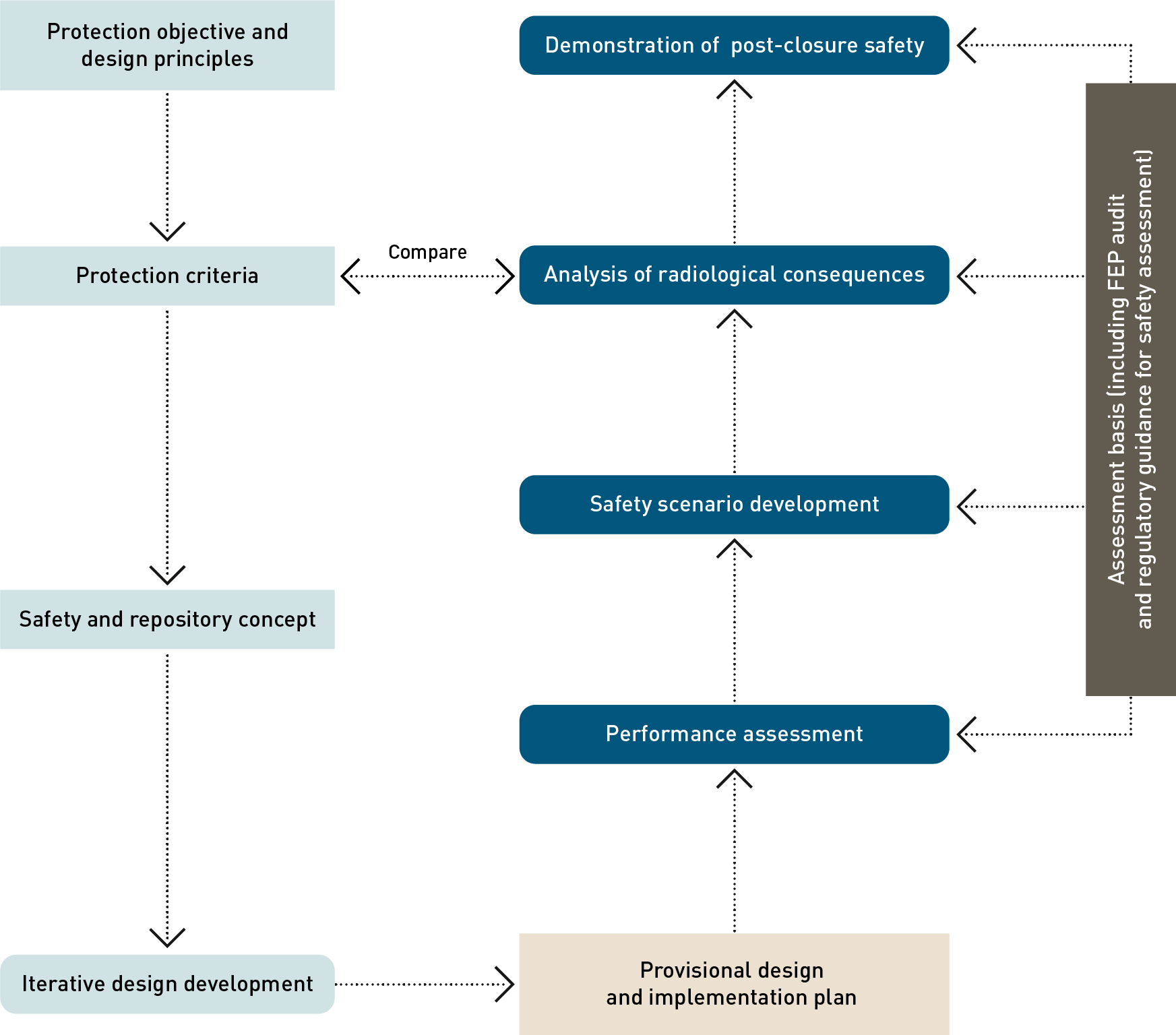The safety assessment, which provides the safety case for the repository as defined by the provisional design and implementation plan, consists of four main processes and is illustrated in dark blue boxes on the right-hand side of Fig. 4‑1.

Fig. 4‑1:Workflow for the post-closure safety case, with the four main processes of safety assessment shown in dark blue boxes on the right-hand side of the figure
Performance assessment (see Chapter 6) develops arguments and presents evidence to show that the safety functions of the repository are upheld and that the system will evolve as expected in most reasonably foreseeable situations, as described in detail in NAB 24‑20 Rev. 1 (Nagra 2024m). Performance assessment also identifies uncertain and potentially detrimental phenomena and other uncertainties that could degrade the functionality of the components of the disposal system or of the overall disposal system, as input to safety scenario development.
Based on the knowledge provided by the assessment basis and the findings of performance assessment, safety scenario development (see Chapter 7) defines a set of safety scenarios that capture the broad ways in which the repository system could fulfil its safety functions over time, as well as additional hypothetical “what-if?” cases, which are aimed at further demonstrating the robustness of the disposal system. Safety scenarios and “what-if?” cases can contain several variants and most of them are, via a set of calculation cases, carried through to the analysis of radiological consequences. There, radionuclide release, retention and transport are modelled, and dose assessments are carried out. Some variants, however, can be handled by qualitative argumentation. These are also identified within the scope of scenario development.
The analysis of radiological consequences (see Chapter 8) uses quantitative models to evaluate annual individual dose rates or risks and complementary safety indicators. Suitable conceptualisations are formulated for the calculation cases that are propagated from scenario development. Both deterministic calculations and probabilistic uncertainty and sensitivity analyses are performed, and the impact of uncertainty is evaluated systematically (see Section 4.4). The results are compared with the regulatory protection criteria and the safety margin for each calculation case is determined. The output of the radiological consequence analysis also includes complementary safety indicators, such as radionuclide fluxes and concentrations, which are described in Chapter 9.
Demonstration of post-closure safety (see Chapter 10) is achieved by bringing the results of the three previous steps in safety assessment together with other information supporting the quality of the safety assessment, the safety and robustness of the repository system, and the strength of the stepwise repository siting, design and implementation processes, in the safety case. The calculated safety margins provide a key line of argument for the overall demonstration of safety in the safety case. As explained in Chapter 9, however, this line of argument is complemented and strengthened by additional lines of argument that address, e.g., the quality of the system.

